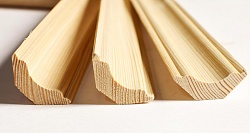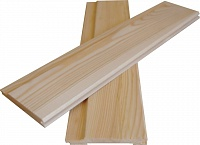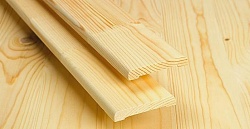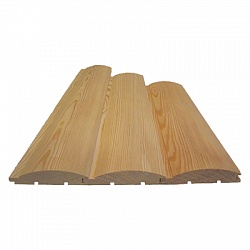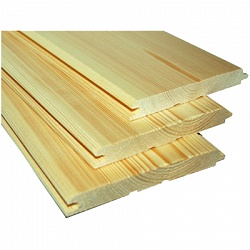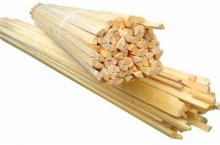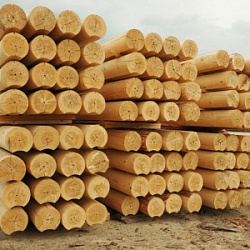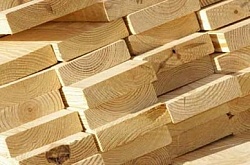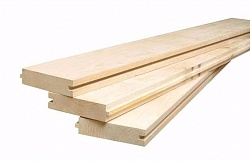- New Products
- Steel products
- Sewing and footwear production
- Wood products
- Furniture
- Construction goods
- Components
- Small architectural forms
- Agricultural products
- Household goods
Sort by cost:
Pogonazhny products
Sort by cost:
Production of molded products
What is molded products? These are products obtained by processing on special woodworking machines blanks from solid solid wood (edged boards) or spliced lamellas. For their production, planing and profiling equipment is used - with appropriate technological processing, the output of the pogonazhny production of the corresponding quality and type is obtained.
The floorboard, eurolining and other types of wood products are the result of woodworking. But how exactly is the production of molded products? In short, the process can be presented in several stages.
First, cut products (as a rule, these are blanks in the form of cut boards of a certain cross section), obtained as a result of cutting raw logs, are sent to drying chambers in which a certain temperature is maintained to remove moisture from wood and relieve internal stresses in boards. This is a rather lengthy procedure and can take 5-7 days to complete. As a result, the moisture content of lumber should not exceed 12 - 18%, and in some cases, 8%, otherwise the product will warp over time, and the wood will be covered with fungal patina, will begin to rot. The sale of molded products depends on the quality and degree of drying, copies of which are sorted manually.
The principle of operation of the drying chamber is simple: lumber, laid on the lining, heated with dry air. Boards do not fit close, but so that between them remained airspace.
Then, dried lumber is pre-sorted and sent for further processing, depending on the type of molded products, as already mentioned.
Produced products must comply with accepted quality standards or specifications. Wood is a natural material that, in principle, cannot be uniform in composition. When pitch pockets, knots, and cracks are detected in the blanks, they are necessarily removed so that the molding products correspond to the varietal characteristics. Modern equipment allows us to speed up the processing of workpieces and make it automated, but, nevertheless, the entire cycle is controlled by specialists, and finished edged products are inspected for defects or undeleted wood defects.
In the manufacture of molded products from spliced lamellae, the next step is the process of gluing individual wooden blanks into a single structure due to special mini-spikes and adhesive composition. The sale of molded-type molded products is becoming increasingly popular and in demand in the lumber market, since its operational characteristics differ for the better from the molding characteristics of the solid array. It is necessary to take into account the higher cost of spliced wood products.
At the last stage, blanks are assigned a specific profile on a planer-profiling line, operating according to a program set by the operator.
The production of molded products from the solid massif, with the exception of a separate stage of gluing wooden blanks, is practically no different from the production of molded products from spliced lamellae. After drying and pre-sorting, simple edged boards are sent immediately to the milling, planer-profiling line, after which the finished molded products are sorted, then packaged and stored in dry rooms.
It is worth noting that the price of the profile products is always higher than the price of simple edged and planed lumber, which requires less time and technological costs. However, the sale of molded products in its volume can be compared with the sale of edged lumber - in terms of the amount of profit extracted from it, despite the fact that any raw material is always cheaper than the product obtained from it. The more processing a material requires, the more expensive its cost and final cost when selling molded products.
In any case, with exterior or interior decoration of a house or another object, materials from a good tree cannot do without the profile products, which are responsible for the excellent appearance.
Read more...
What is molded products? These are products obtained by processing on special woodworking machines blanks from solid solid wood (edged boards) or spliced lamellas. For their production, planing and profiling equipment is used - with appropriate technological processing, the output of the pogonazhny production of the corresponding quality and type is obtained.
The floorboard, eurolining and other types of wood products are the result of woodworking. But how exactly is the production of molded products? In short, the process can be presented in several stages.
First, cut products (as a rule, these are blanks in the form of cut boards of a certain cross section), obtained as a result of cutting raw logs, are sent to drying chambers in which a certain temperature is maintained to remove moisture from wood and relieve internal stresses in boards. This is a rather lengthy procedure and can take 5-7 days to complete. As a result, the moisture content of lumber should not exceed 12 - 18%, and in some cases, 8%, otherwise the product will warp over time, and the wood will be covered with fungal patina, will begin to rot. The sale of molded products depends on the quality and degree of drying, copies of which are sorted manually.
The principle of operation of the drying chamber is simple: lumber, laid on the lining, heated with dry air. Boards do not fit close, but so that between them remained airspace.
Then, dried lumber is pre-sorted and sent for further processing, depending on the type of molded products, as already mentioned.
Produced products must comply with accepted quality standards or specifications. Wood is a natural material that, in principle, cannot be uniform in composition. When pitch pockets, knots, and cracks are detected in the blanks, they are necessarily removed so that the molding products correspond to the varietal characteristics. Modern equipment allows us to speed up the processing of workpieces and make it automated, but, nevertheless, the entire cycle is controlled by specialists, and finished edged products are inspected for defects or undeleted wood defects.
In the manufacture of molded products from spliced lamellae, the next step is the process of gluing individual wooden blanks into a single structure due to special mini-spikes and adhesive composition. The sale of molded-type molded products is becoming increasingly popular and in demand in the lumber market, since its operational characteristics differ for the better from the molding characteristics of the solid array. It is necessary to take into account the higher cost of spliced wood products.
At the last stage, blanks are assigned a specific profile on a planer-profiling line, operating according to a program set by the operator.
The production of molded products from the solid massif, with the exception of a separate stage of gluing wooden blanks, is practically no different from the production of molded products from spliced lamellae. After drying and pre-sorting, simple edged boards are sent immediately to the milling, planer-profiling line, after which the finished molded products are sorted, then packaged and stored in dry rooms.
It is worth noting that the price of the profile products is always higher than the price of simple edged and planed lumber, which requires less time and technological costs. However, the sale of molded products in its volume can be compared with the sale of edged lumber - in terms of the amount of profit extracted from it, despite the fact that any raw material is always cheaper than the product obtained from it. The more processing a material requires, the more expensive its cost and final cost when selling molded products.
In any case, with exterior or interior decoration of a house or another object, materials from a good tree cannot do without the profile products, which are responsible for the excellent appearance.
